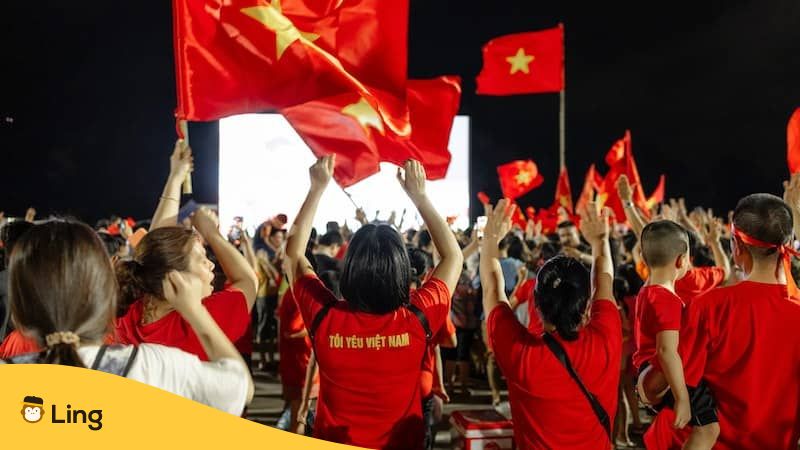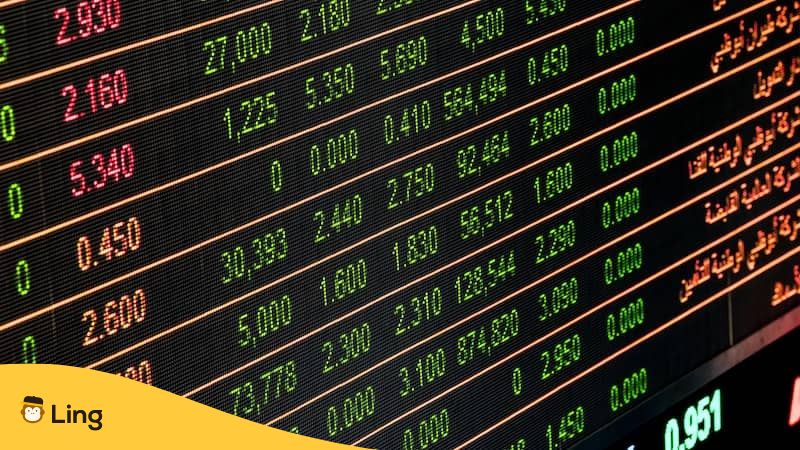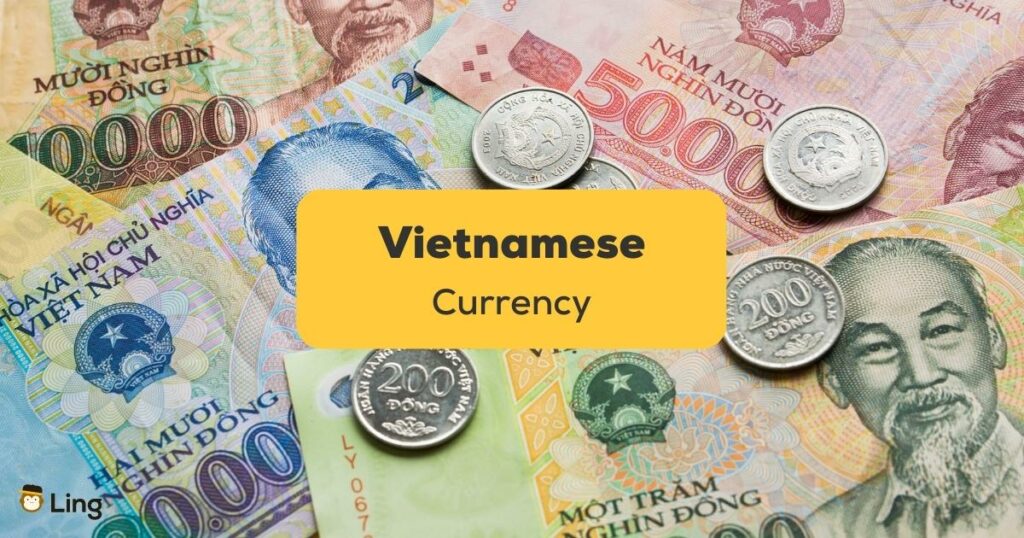Vietnamese currency is one of those things that people often overlook when they book a holiday in Vietnam. I was particularly guilty of this myself. The first time I came to Vietnam, my parents told me to get traveler’s checks, and I had no idea what they were (in fact, I still don’t). I told them it would be fine and I’d just get ‘Vietnamese Dong’ when I got there.
Let’s discover more about the Vietnamese currency first by knowing how to say it and other related vocabulary.
What Is The Vietnamese Word For Currency?
Dong is the official Vietnamese currency. But how do you say currency in Vietnamese? It is called tiền tệ . While in Vietnam, it’s important to do your research on how to withdraw money from banks or to do foreign exchange. There are dozens of other Vietnamese words and phrases that you can use while traveling.
Vocabulary Related To Money In Vietnamese

Phrases Related To Money In Vietnamese
The Realities Of Using Vietnamese Dong While In Vietnam
In Vietnam, this kind of laissez-faire approach can cause problems. The first and most pressing is that finding an ATM can sometimes be difficult.
The second problem is that the concept of having millions of something is very confusing to us. Vietnamese currency, as referenced earlier, is measured in Dong. The denominations are 100, 200, 500, 1000, 2000, 5000, 10,000, 20,000,50,000, 100,000, 200,000, and 500,000. I still remember feeling like an absolute baller when I went into Circle K with my 500 note. Alas, I quickly worked out that 500 dong is equivalent to about 1p in England. In Vietnam, you’re a millionaire, but so is everybody else too.
Note: 1 million VND is equivalent to about $40 USD.
The third problem is that the notes are all very similar to look at, which can lead to issues when paying for stuff. For example, the colors of the 20,000, 100,000, and 500,000 are all blue/green, so sometimes you come to pay your bill in the near light and realize you’ve handed a taxi driver 500,000 instead of 20,000.
The fourth problem is related to the 3rd and is something you should be aware of. The notes have a nasty habit of sticking together, so you pull out a 500,000 note, unbeknownst another two have attached to it, and the street vendor has suddenly had a very good day!
About the street vendors, motorbike drivers, etc. They always have very little currency on them. It’s unheard of to pay a Grab Bike driver with a 500,000 note, and you’d probably be struggling to pay with a 200,000 if you’ve traveled a short distance. For that reason, always carry smaller notes, particularly 50,000s, which are the most commonly used.

Vietnamese Currency Facts
- The official currency of Vietnam is the ‘dong.’
- The currency symbol is ₫
- Foreign currency is much sought after, and it is possible to pay in some places with the US dollar. However, you’ll always be handed your change in dong. Other foreign currencies are less widely accepted, but in tourist areas, you’ll often find people who will want to make some profit exchanging banknotes for you.
- The currency code is VND
- All the money you receive will be paper. (You can buy commemorative coins if you like, but I’ve never seen one in 5 years of living here)
- The dong was first introduced into Vietnam in 1946 by the then-North Vietnam government to replace the French piastra. It wasn’t until 1975, when the South Vietnamese government was ousted after losing the Vietnamese war, that South Vietnam also came to use the dong
- The currency was hit with a massive wave of inflation in the 1980s, which explains why today, 1,000,000 only equals about $40.
- Lower denomination Vietnamese banknotes are made of cotton, and higher ones are of polymer
- In the past, the dong was subdivided into even smaller units called the hao and xu. These were often in the form of aluminum coins
- Can you guess who the only person on the banknote is? That’s right. Uncle Ho. Ho Chi Minh, the legendary communist thinker and founder of modern Vietnam, festoons every denomination. The picture is identical on each note, so you can see why it causes problems in differentiating between them.
Learn Vietnamese With The Ling App
Wow, we really got through a lot today. How do you feel? Would you feel confident walking into the bank of Vietnam to exchange banknotes, or how about discussing foreign currencies with a friend?
Ling is here to tell you to do all those things and more. Our app has utilized fun mini-games and quizzes to ensure you keep returning for more. Note: there are grammar guides etc., but they’re very much nonintrusive and don’t hamper the experience with the app. If you want to quickly check the Ling app, you can download it on the Play Store or App Store now!
If you’ve used Duolingo before, you’ll know what to expect. However, you’ll find with Ling that there is access to many lesser-spoken languages, such as Vietnamese. In fact, there are 60+ languages in total that you can try.
If you liked this blog, why not check out a few others, such as religion in Vietnam and how to order food in Vietnamese.
Updated by: CJ



































































